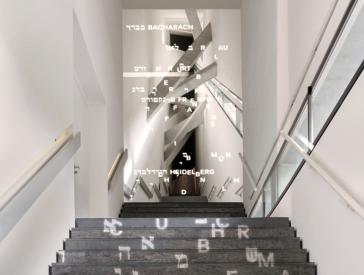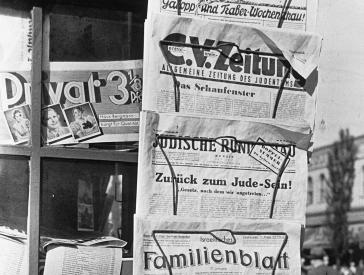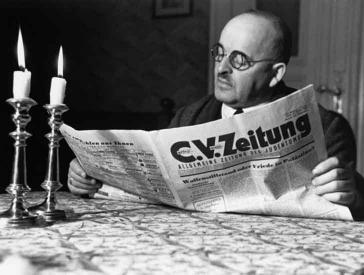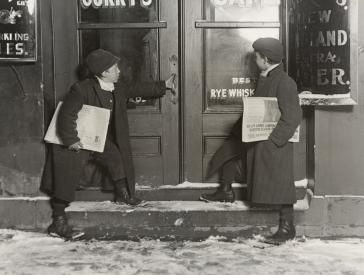“Obedience. An Installation in 15 Rooms by Saskia Boddeke & Peter Greenaway”
Press Information
Press Release, Thu 21 May 2015
This evening, Thursday, May 21, 2015, sees the opening of a special exhibition by the artist couple Saskia Boddeke and Peter Greenaway at the Jewish Museum Berlin. Under the title “Obedience. An Installation in 15 Rooms,” (22 May to 13 September 2015) multimedia artist Boddeke and filmmaker Greenaway have created a visually opulent staging of the much-debated biblical story of God’s command to Abraham to sacrifice his own son. “The installation is a contemporary and very personal interpretation of a biblical text that, in very different ways, is at the heart of the religious tradition in each of the three monotheistic religions,” says Cilly Kugelmann, Program Director at the Jewish Museum Berlin. Whereas the biblical text is primarily concerned with Abraham’s fidelity to God, Boddeke and Greenaway focus on the fate of the son who is to be sacrificed. They project the drama of his threatened life onto the crises and wars of the present day.
- Kontakt
-
Press office
T +49 (0)30 259 93 419
presse@jmberlin.de - Address
Jewish Museum Berlin Foundation
Lindenstraße 9–14
10969 Berlin
Contemporary References
In the foyer, visitors are introduced to the core family of the biblical narrative – Abraham, Sarah, and her son Isaac – in film form. The exhibition itself begins with the large video installation “I am Isaac/I am Ishmael,” drawing attention to Abraham’s two sons: his firstborn Ishmael, and the yearned-for Isaac. In the run-up to the exhibition, children and young people were asked to make statements identifying themselves as Isaac or Ishmael, and for the artists their words form an important starting point for the exhibition. In the name of all children, the youngsters claim the right for their lives to be protected. This motif recurs in different variations across several installations. A photo gallery showing pictures of fathers and mothers with their children addresses the relationship between authority figures and their dependants. A dramatic climax comes in the “Sacrifice” room with the largest film installation, which links the sacrifice of Isaac to scenes of children in present-day crisis and war zones.
A Filmic Trail through the Exhibition
Boddeke and Greenaway disengage the biblical narrative from its theological setting and recontextualize it by emphasizing extraordinary visual fragments. Drawing on legends and rituals in Judaism, Christianity, and Islam, the Amsterdam-based artist couple have configured the story as a large multimedia installation covering 900 m2 of exhibition space. Internal coherence is created by films produced for the exhibition, which are shown in the rooms in 15 sequences, with a soundtrack specially composed by musician Luca D’Alberto. This trail drives the dramatic events onward as a visual, dance-like commentary. The films include a series with father and son en route, long exposures of the story’s legendary settings, and the sacrificial narrative itself as danced by the renowned Israeli company Club Guy & Roni (based in Groningen). As a counterpoint to the films, a textual trail of calligraphic quotations from Jewish and Islamic legends guides visitors through the exhibition.
Fifteen Thematic Rooms
The exhibition stages the story dramatically, with spatial installations leading the visitor through the biblical narrative. The rituals and legends that cluster around the story are presented in multimedia installations and calligraphic art on the walls, as well as through precious objects and the works of contemporary artists. A magnificent treasure chamber, the “Golden Room,” brings the literary text center stage. It displays a Hebrew and a Latin Bible, a copy of the Qur’an, and other priceless manuscripts. A dazzlingly white room on the theme of God and the angel follows, then a pitch-dark room inspired by the Islamic ritual, during the pilgrimage to Mecca, of ritually stoning Satan to punish him for tempting Abraham to disobey God. Atmospherically intense spaces and coolly distanced installations present the meaning of the sacrifice in the three religions. The artists devote a separate room to Sarah and Hagar, the two mothers. An installation with dripping water bottles evokes the story of how Hagar and her son Ishmael were rescued from dying of thirst in the desert, and alludes to the holy water of Zamzam that is drunk during the Hajj pilgrimage. The “Ram” room, with Damien Hirst’s “The Black Sheep with Golden Horns” (2009), is dedicated to the animal that was sacrificed in place of Abraham’s sons Isaac and Ishmael. It is followed by the “Agnus Dei” room, lined with sheep’s wool. The smell of sheep is part of the multisensory experiential quality of the exhibition.
The Artist Couple Boddeke and Greenaway
Saskia Boddeke and Peter Greenaway have been working together for twenty years. The installation in the Jewish Museum Berlin is their first museum project in Germany. “Our collaboration means constant confrontation, or rather struggle: it keeps our ideas energetic,” says Saskia Boddeke. The two artists share a love for opera and for opulence. Their exhibitions, multimedia installations, opera productions, and video mappings have been shown worldwide to great acclaim. Both artists also continue to work separately,
Boddeke with performances and multimedia shows, Greenaway since the 1980s with films, most recently in competition at the 2015 Berlin Film Festival.
For the duration of the exhibition, specially trained guides will lead discussions in and about the exhibition.
The accompanying program will be presented at the press conference.
Trailer for the exhibition: www.jmberlin.de/obedience
The accompanying publication in German and English, Obedience, ed. Peter Greenaway, Margret Kampmeyer-Käding, and Cilly Kugelmann for the Jewish Museum Berlin, is published by Kerber (156 pages including 92 full-page illustrations, retail price 35 €, museum shop price 30 euros). It can be purchased at the press conference for the special price of 10 €.
Partner
Wall AG
Media partners
rbb Fernsehen
monopol-Magazin für Kunst und Leben
Yorck Kinogruppe
zitty Berlin
Supported by
Friends of the Jewish Museum Berlin
Kingdom of the Netherlands



